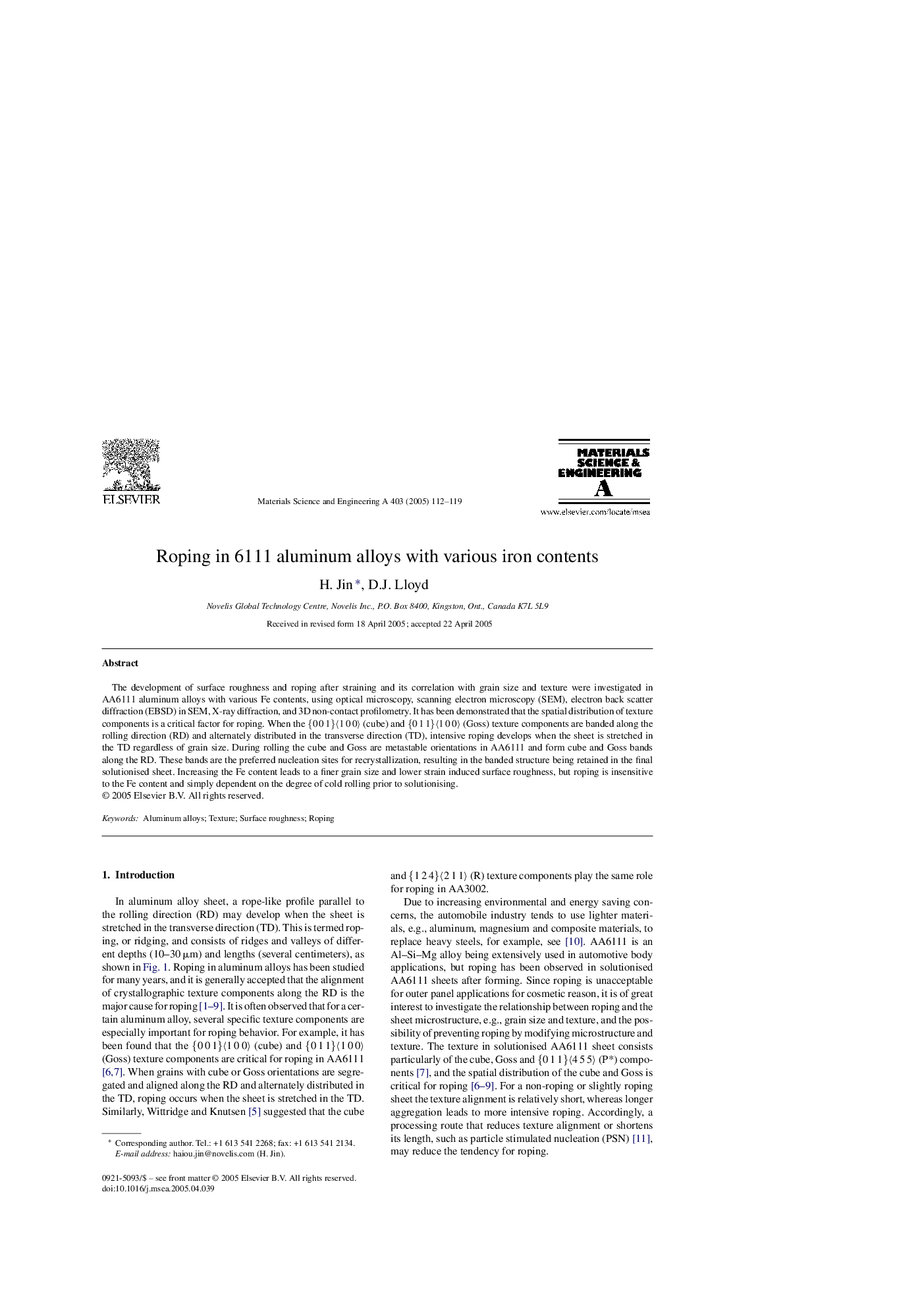| Article ID | Journal | Published Year | Pages | File Type |
|---|---|---|---|---|
| 9795987 | Materials Science and Engineering: A | 2005 | 8 Pages |
Abstract
The development of surface roughness and roping after straining and its correlation with grain size and texture were investigated in AA6111 aluminum alloys with various Fe contents, using optical microscopy, scanning electron microscopy (SEM), electron back scatter diffraction (EBSD) in SEM, X-ray diffraction, and 3D non-contact profilometry. It has been demonstrated that the spatial distribution of texture components is a critical factor for roping. When the {0Â 0Â 1}ã1Â 0Â 0ã (cube) and {0Â 1Â 1}ã1Â 0Â 0ã (Goss) texture components are banded along the rolling direction (RD) and alternately distributed in the transverse direction (TD), intensive roping develops when the sheet is stretched in the TD regardless of grain size. During rolling the cube and Goss are metastable orientations in AA6111 and form cube and Goss bands along the RD. These bands are the preferred nucleation sites for recrystallization, resulting in the banded structure being retained in the final solutionised sheet. Increasing the Fe content leads to a finer grain size and lower strain induced surface roughness, but roping is insensitive to the Fe content and simply dependent on the degree of cold rolling prior to solutionising.
Related Topics
Physical Sciences and Engineering
Materials Science
Materials Science (General)
Authors
H. Jin, D.J. Lloyd,
